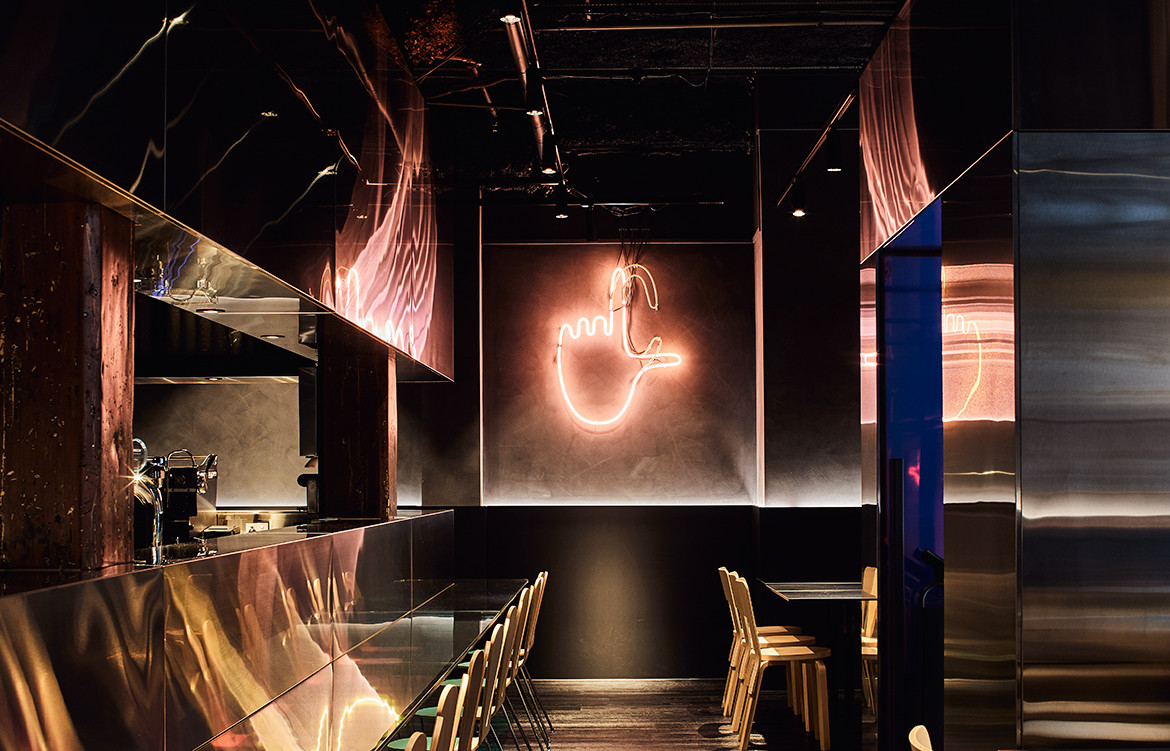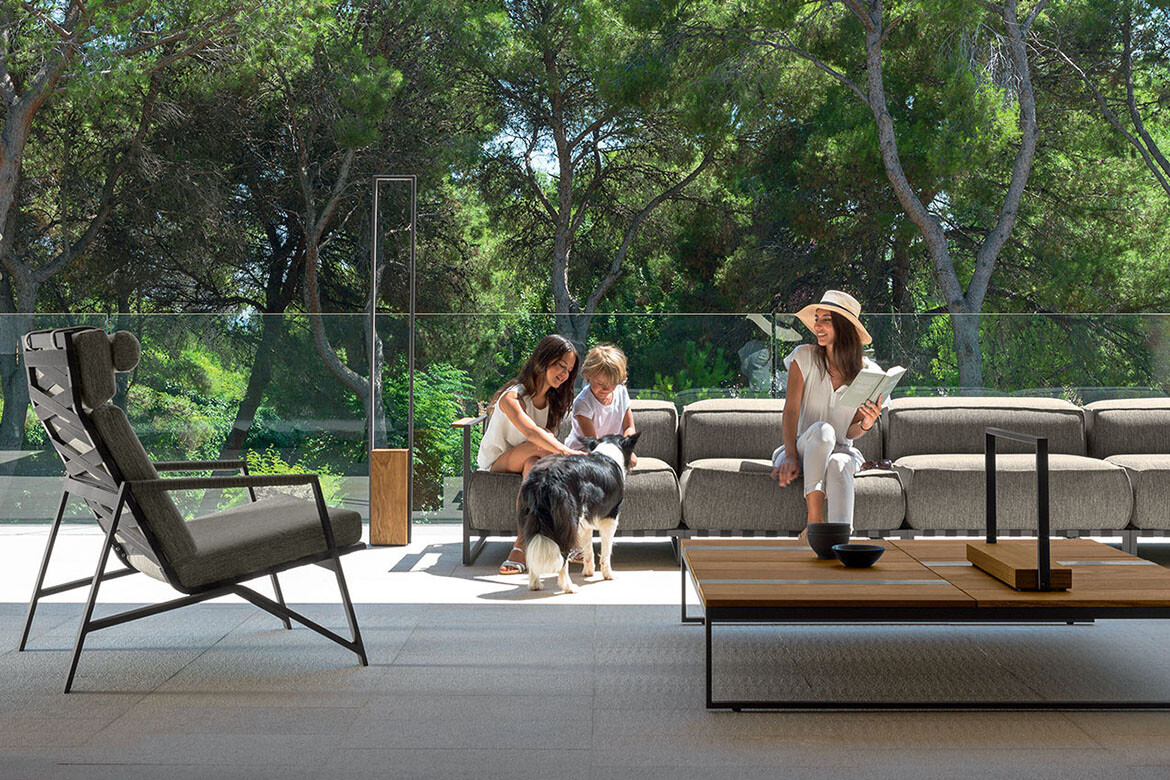A historic 150-year-old converted townhouse sits in Niagara Lane, one of the oldest laneways in Melbourne’s city centre. This heritage-listed site has been transformed into a feat of innovative and daring design, blending theatre, creativity and contemporary flavours.
Run by co-owners Solar Liang and Monique Wu, Café Lafayette is not your typical café. When the world shut its doors earlier last year, we never expected the simple joys of celebrating and eating out to disappear so quickly. It is in these months of lockdown that we have recognised that a restaurant is much more than its food offering; it is the culinary spectacle of intoxicating aromas, plated artistry and an energy in the atmosphere that delves deep into all five senses. The result is an experience far more memorable than anything we can take home.

Melbourne’s crowded café scene demanded something that would shake it up. Influenced by the presence of the ‘Instagram Generation’, Liang and Wu engaged architecture firm Hassell to create a space that provided an entirely unexpected café experience, unlike anything else in the city. “Through working so closely with the owners, we’ve come to know and understand their experimental Japanese-inspired menu and the creative thinking behind it,” co-lead designer Prue Pascoe says. “The Melbourne food scene is very established and there are a lot of spaces occupying that ‘white and light’ aesthetic, so it was very exciting to see them be so brave and determined to challenge that.”
Influenced by the presence of the ‘Instagram Generation’, Liang and Wu engaged Hassell to create a space that provided an entirely unexpected café experience.


This prompted the design team to strip out the idea of a conventional café. However, the historic significance of the site meant that the original structural features and internal and external brickwork had to remain untouched. Additionally, the compact rectilinear space did not allow for much natural light aside from mere glimpses through a small, street-facing window. At the start of the process, this was a challenge that the designers identified.
Reminiscent more of a nightclub than your typical urban café, Hassell inserted a black vessel into the site, creating a backdrop for an immersive journey of artful food.
In collaboration with Melbourne-based Studio Round, an authentic brand experience was established through an experiential, sensory narrative that surpassed any restrictions within the site. The revitalised space pays homage to its past while remaining an evolving destination that ties together its heritage and an exciting, future-forward design story.

A dichroic glass tunnel leads the experience. As the only feature visible to the street, it creates a sense of intrigue for the visitor from the point of arrival. “The way you enter is the start of the whole experience,” adds co-lead designer, Di Ritter. “You go through this psychedelic structure that changes colour as you move through and it catches you off-guard, momentarily displacing you in this transitional point between the street and café. Then you arrive at Café Lafayette and you’re transported to this whole new world.”
“Solar and Monique inspired us to reimagine the way we dine.”
Reminiscent more of a nightclub than your typical urban café, Hassell inserted a black vessel into the site, concealing the existing brickwork underneath and providing a backdrop for an immersive journey of artful food. At the heart of the restaurant sits the Japanese-style sushi bar that takes the form of a striking, stainless steel box. Evocative of a theatrical show, it offers a communal dining space that immerses the diner in a gustatory experience that feeds the eyes and the stomach at the same time. The cantilevered dining counter is covered in dichroic film, reflecting hues of purple, pink, blue and green, splashed across the countertop as you eat. Sitting on the wall above is a custom hand-shaped neon light, which forms the letters letters C and L and further amplifies the vibrant, youthful tone. This is one of the perfect, Instagrammable moments that Liang and Wu envisioned.

The clean, futuristic elements of dichroic surfaces and steel create a kaleidoscopic wonderland in the ‘black bowl’ of Café Lafayette. To soften the space, furnishings such as the Artek Chair 66, the Artek Stool from Artek and the iconic Sanaa Rabbit chair bring a sense of comfort and warmth for the diners. Café Lafayette required a specific atmosphere and a material palette that broke down the stereotype and familiarity of a light-filled eatery. The end result is a colourful, textural concept that was surprising and unpredictable; one that championed the culinary brilliance of the menu.
“You look at the menu of Café Lafayette and you instantly become engrossed with these explosive Australian-Japanese flavour combinations. You just have to free yourself of anything you thought you knew about café dining,” says Ritter. “Solar and Monique inspired us to reimagine the way we dine.”


Café Lafayette is the antithesis of a conventional Melbourne eatery. Hassell and Studio Round look to challenge the architectural landscape of trendy café dining with an experience that is dramatic, disruptive and wholeheartedly embraces the leap into the digital generation. The experience at Café Lafayette pushes visitors out of their comfort zone while slowly inviting them to uncover its culinary layers and discover the magic within the walls.
Liang and Wu wanted to create a new narrative of theatrics in café hospitality; an experience that you need and want to be immersed in,” expresses Pascoe. “Hospitality will always weave itself into everyday life because people crave the whole experience of a restaurant. And here, you’re getting all that plus a sense of dichroic magic.”
Photography by Peter Bennetts












